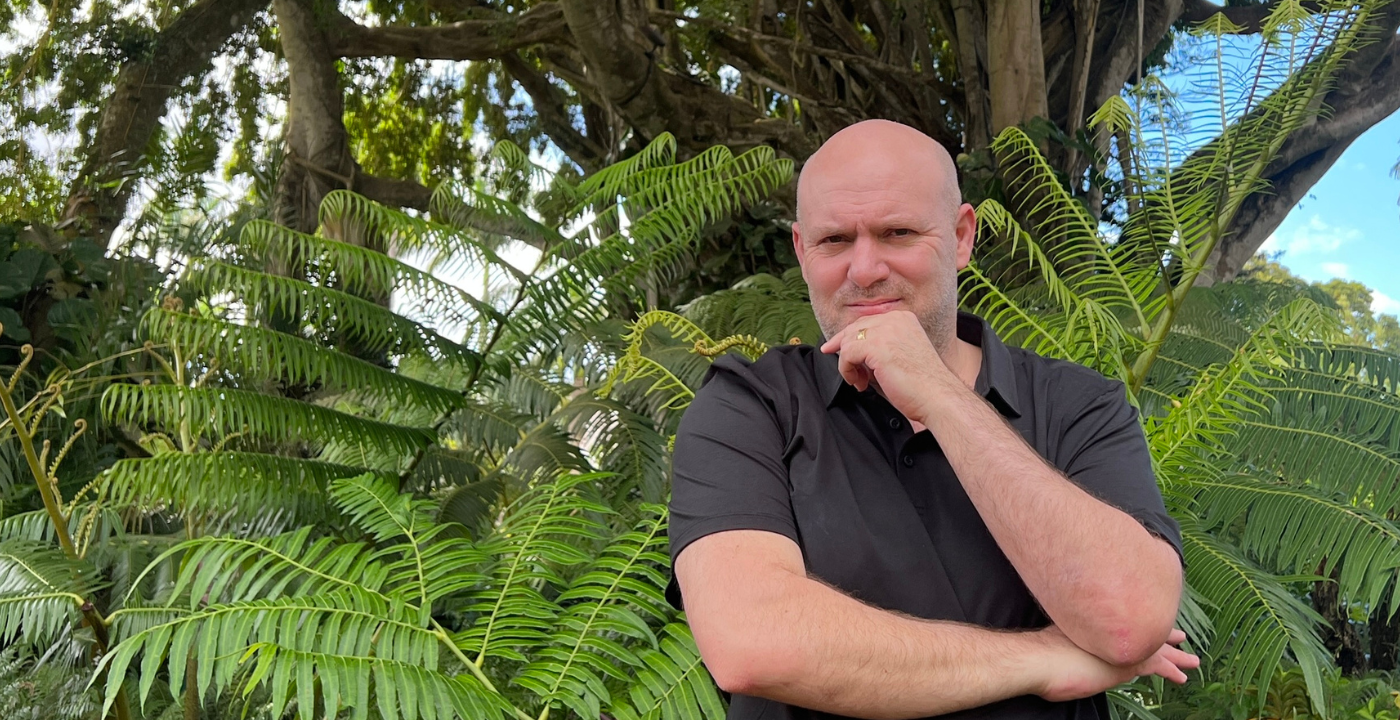So flash forward about five, seven
years. Here I am in
Madagascar now. I'm not thinking Demantoid at all. I’m thinking Sphene, I’m
thinking Aqua, I’m thinking Sapphire, I’m thinking Ruby. And voilà: what do I
do? I go to this village and no joke,
full transparency, this is what happened.
So I'm hanging out with this guy, and we're traveling up along the coast in the
northern part of Madagascar. And he's working with the U.N. on carbon credits.
I mean, carbon credits. I don't know anything about carbon credits. But
something about carbon credits. And did you know—and I learned this as
well—that the mangroves produce ten times more oxygen than the green forests,
or the forests in Brazil. Right? The rainforest. And I'm thinking, how can the
mangroves produce ten times the oxygen of the rainforest? Now, I don't know if
this is exact. Listen, I don't work for the UN, but I'm hanging out with this
guy. We're going village to village. We're looking at the different locales,
looking at the mangroves, and no joke, this guy—we meet the villager of this
town in Madagascar, and he's got this green stone on his table while we're
sitting there talking to him. And I'm looking at this green stone, I start
touching it, playing with it, and they're talking about, you know, carbon
credits and how they got to save the mangroves, and all that good stuff that
gives us the breath, the air we
breathe. Me, I keep looking at this green rock
thinking, What the heck is this thing? What the heck is this thing I'm looking
at?
I'm looking, looking, looking, looking, trying to figure
out the crystal structure, thinking,
okay, must be Tourmaline, must be this. It
looks like Garnet, though. It looks like it's got, you know, the crystal
structure. I'm, like, starting to drool, man. I'm starting to drool. Anyway, I
convinced him to give me, you know, let me take the stone. I go back, I check
what it is. And holy moly, we have discovered Demantoid in Madagascar.
Unbelievable.
So I rush back. Come back to this village—of course,
without the U.N. guy—and sit down with
the village boss and say, hey, listen,
where the heck do you get this stone? And he says, Oh, some of the villagers,
they pull it out of the bank, they pull it out of the mangroves. And what
they're doing is when the tide would drop, the villagers would jump in. The
tide would drop, and it's sort of like a swampy mud water right amongst the
mangroves. They hold on to the
mangroves and they were putting in these small
nets trying to dig out these particular Demantoids. So here we got: there's a
Demantoid deposit in the middle of the mangroves. Who the heck would have ever
thought that would be possible? But it was possible.
Well, guess what?
I got to eat Madagascar cuisine for six
weeks. I mean, that pot, that pot or that pot. But I stayed there for six weeks
while we extracted all the Demantoid we could get. I got a lot of amazing
stones out of Madagascar. There's no
more mining of this material. I mean, they
basically—it was a one shot wonder. I got all the rough. And these stones pop,
you know, a variation of color very similar to Andradite, which is the mineral
type of Demantoid. So they range from a greenish yellow all the way to that
vibrant green color, like Demantoids. But they all have more dispersion than
Diamonds.
So really crazy, exciting times when that happens, where,
you know, something that nobody expects comes out of the blue. But hey, that's
my experience: from carbon credits to Demantoid in Madagascar. Those were crazy
days. Yeah. Anyway, I hope you enjoyed this back story of the whole world of
Demantoid. But I will tell you this: Demantoid is one of Mother Nature’s rarest
gems. It is one of the most collectible gems in the world. And I will tell you,
full transparency, it's only rising in price. So if you own a Demantoid of
significant size, you win already. If you bought a 2.00 carat, a 3.00 carat, a
4.00 carat Demantoid, the prices are consistently and continuously growing. I
mean, I've seen Namibian 10.00 carat Demantoid sell for $20,000, $25,000, even
up to $30,000 a carat. 5.00 carats break, you know, $15,000, $20,000 a carat on
a regular basis coming out of Namibia.
Madagascar is a one shot, small wonder.
So the pricing is in line with Namibian. They look identical, they look
similar. They're very different than the Russian. They don't have the
horsetail. They have all the sparkle; sparkles like a Diamond. So different
type of material, but was very short-lived.


